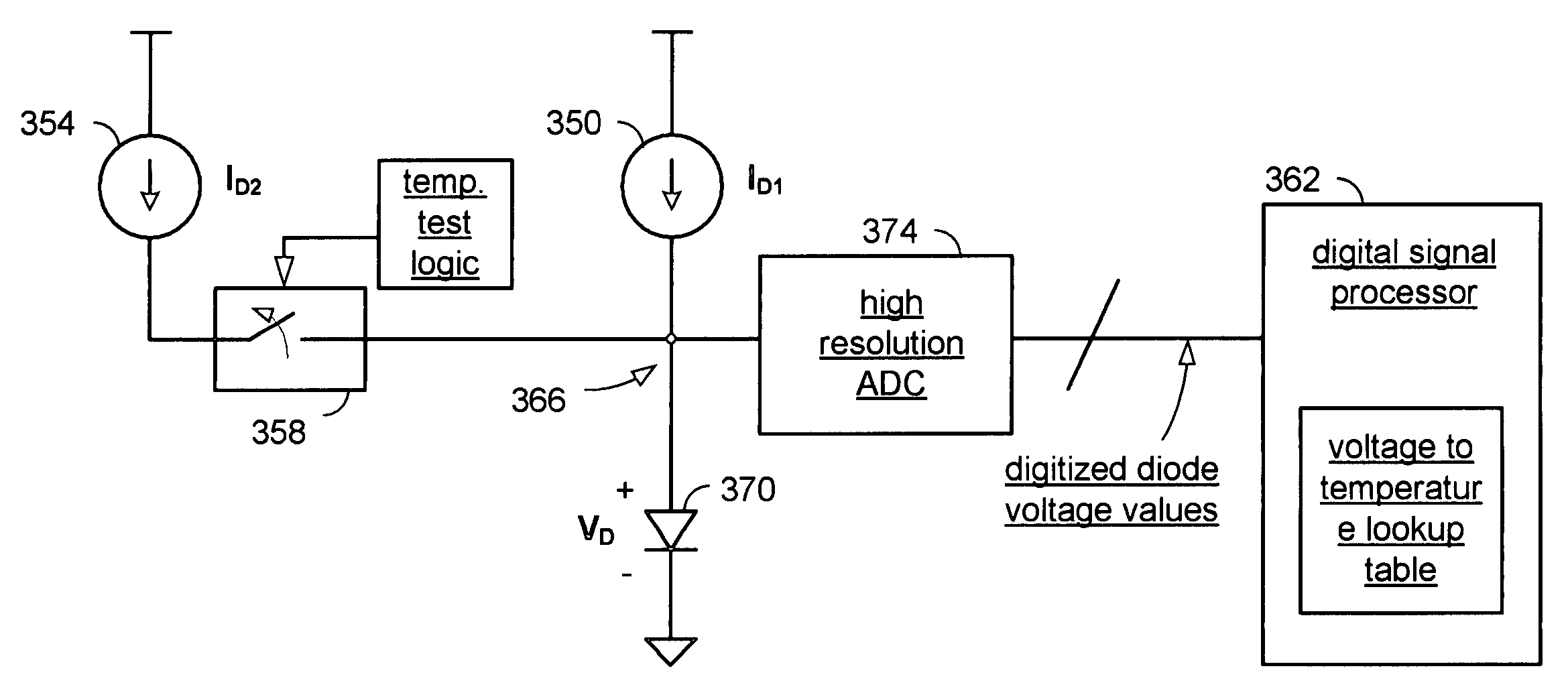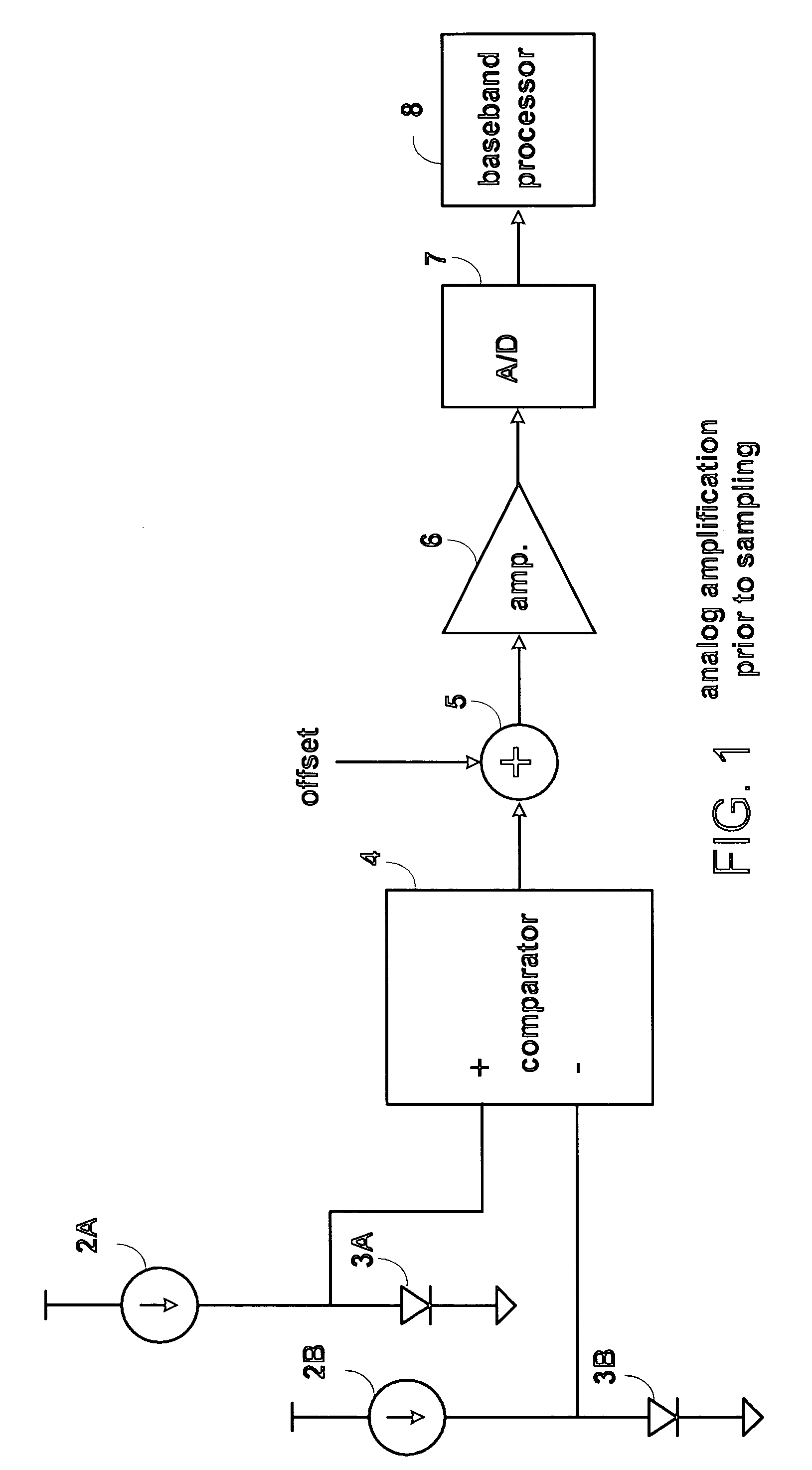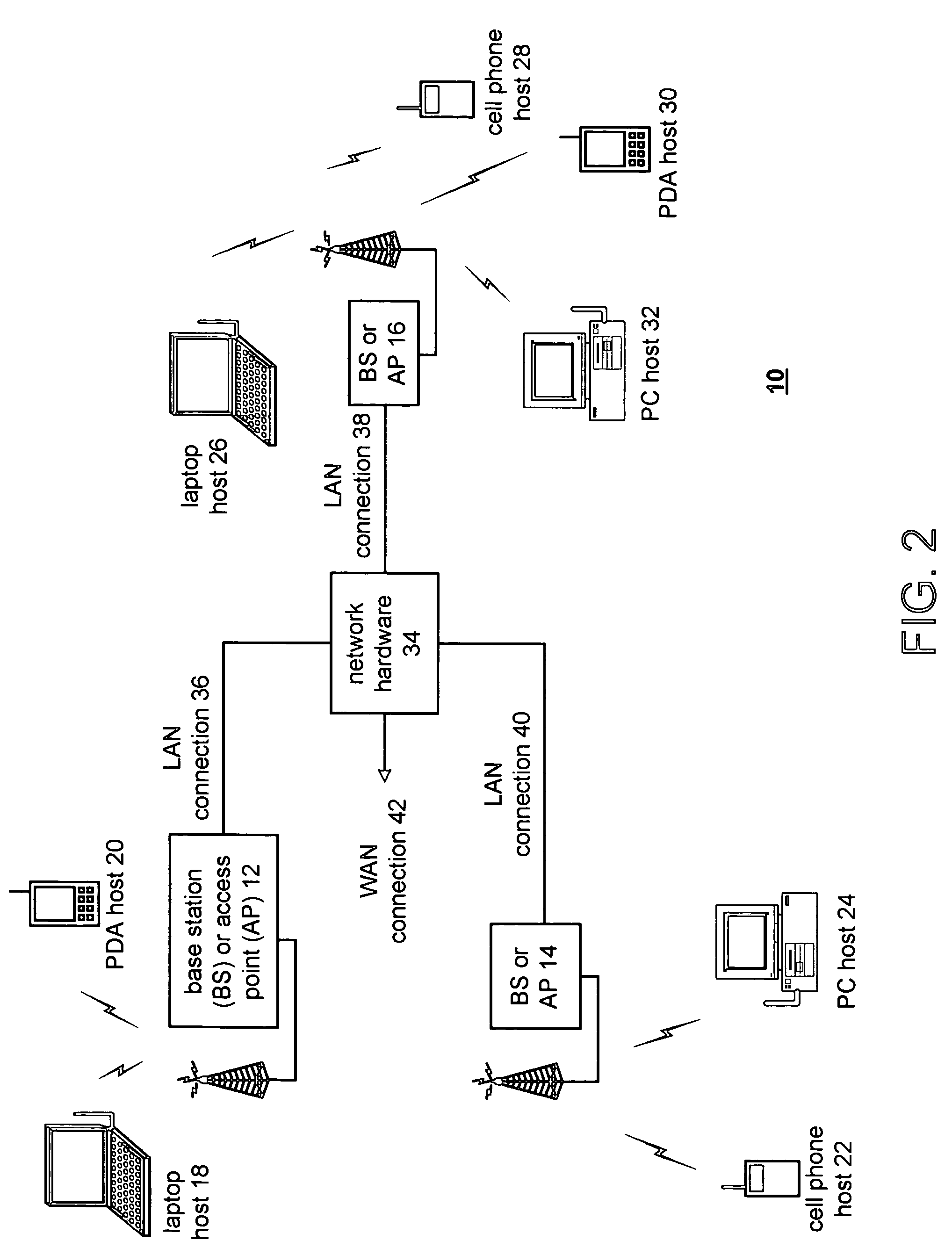Highly accurate temperature sensor employing mixed-signal components
a temperature sensor and mixed signal technology, applied in the field of communication systems, can solve problems such as errors, and achieve the effect of high absolute accuracy
- Summary
- Abstract
- Description
- Claims
- Application Information
AI Technical Summary
Benefits of technology
Problems solved by technology
Method used
Image
Examples
Embodiment Construction
[0048]FIG. 1 is a functional schematic block diagram of a temperature sensor with amplification prior to sampling. As may be seen, a plurality of current sources 2A and 2B produce a current into diodes 3A and 3B, respectively. Voltage drops across the anode of diodes 3A and 3B are produced to plus (+) and minus (−) inputs of a comparator 4 which produces a difference of the voltage drops to an adder 5 which is further coupled to receive an offset signal. A sum of the offset signal and the difference of the voltage drops is then produced to an amplifier 6. An amplified signal produced by amplifier 6 is then produced to an analog-to-digital converter 7 which produces a digital value reflecting a temperature difference of diodes 3A and 3B. A baseband processor 8 then produces temperature compensation to modify a specified device's operational range based upon the digital value reflecting the temperature difference (and therefore a temperature of the diode 3A or 3B that is being used as...
PUM
 Login to View More
Login to View More Abstract
Description
Claims
Application Information
 Login to View More
Login to View More - R&D
- Intellectual Property
- Life Sciences
- Materials
- Tech Scout
- Unparalleled Data Quality
- Higher Quality Content
- 60% Fewer Hallucinations
Browse by: Latest US Patents, China's latest patents, Technical Efficacy Thesaurus, Application Domain, Technology Topic, Popular Technical Reports.
© 2025 PatSnap. All rights reserved.Legal|Privacy policy|Modern Slavery Act Transparency Statement|Sitemap|About US| Contact US: help@patsnap.com



